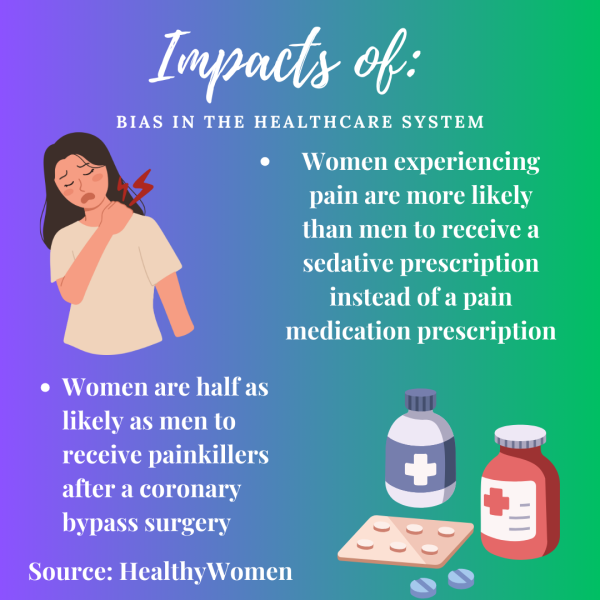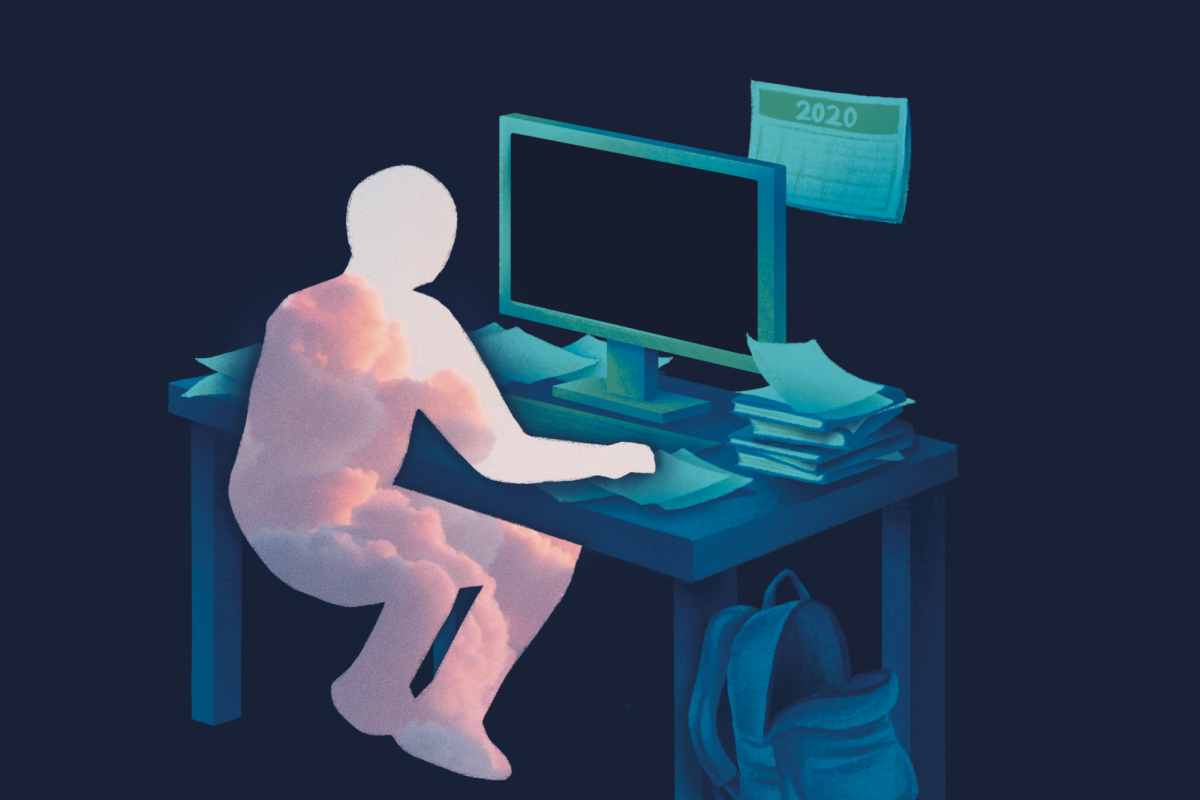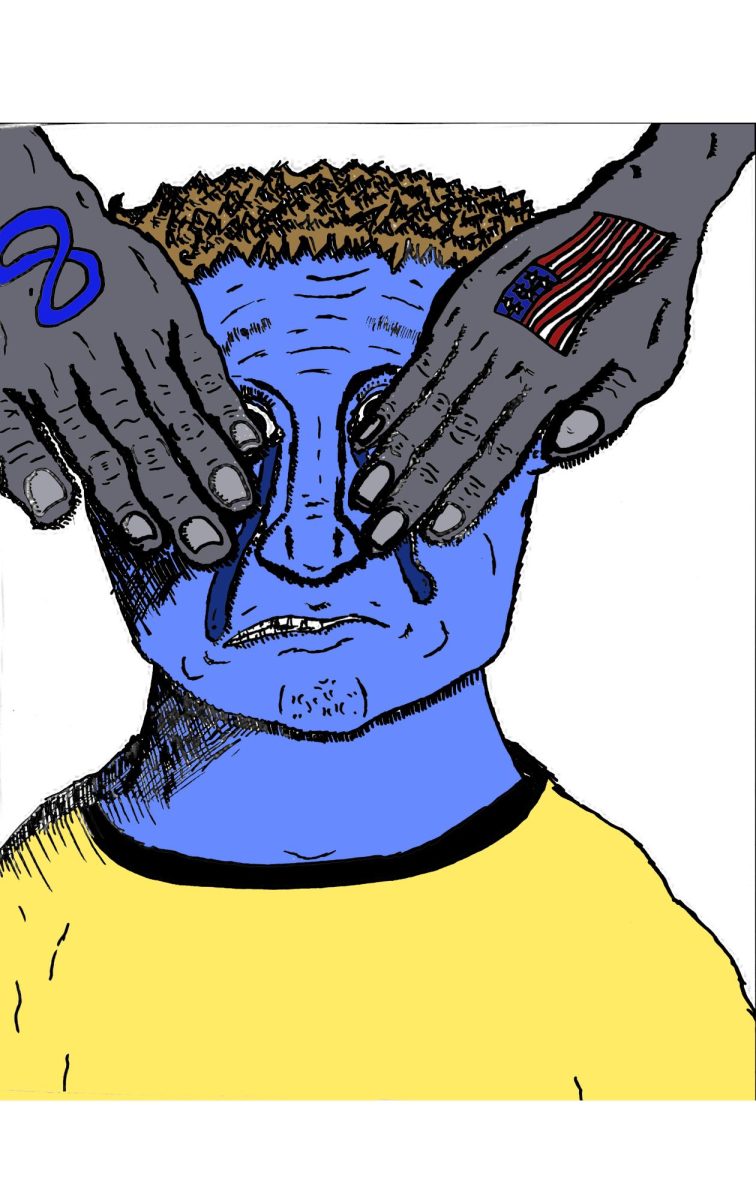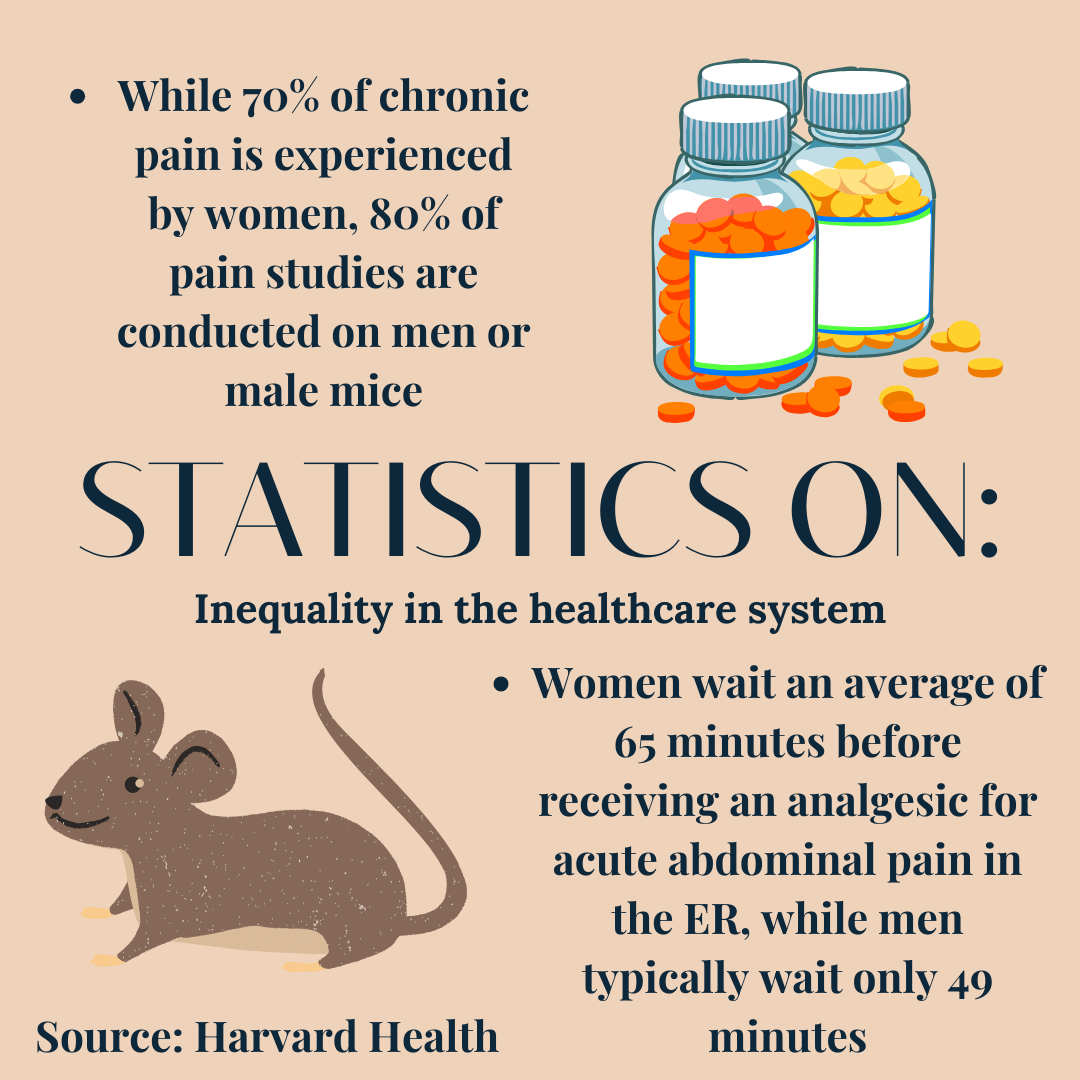From the discovery of penicillin in 1928 to advancements in mRNA technology that may enable the development of vaccines for diseases that are difficult to prevent, innovations in medicine have paved the way for a more effective healthcare system; in spite of such progress, a survey conducted by the Wellbeing of Women charity revealed over 56% of women feel their pain is ignored or dismissed by healthcare professionals.
“If you look at it historically, women are thought of as hysterical,” practical nursing teacher Cynthia Holland said. “They’re thought of as not handling things well and being overly emotional, so I think people would tend to think maybe some of that would lend itself to overestimating their pain or overacting their pain, ultimately leading to the undertreatment of their pain.”
According to Harvard Health, most studies that are conducted on pain have primarily focused on men and the findings are typically applied broadly to all individuals, regardless of their gender or medical history. By doing so, researchers and healthcare professionals reinforce gender disparities, along with discounting the fact that women potentially experience pain more intensely than men do.
“People whose pain has been minimized are probably discouraged from seeking health care leading to further issues that go undiagnosed,” medical assistant senior Josiah Huang said. “That’s really similar to how people in lower income demographics tend to have a higher death rate in treatable cancers, because it progresses to a stage where it becomes untreatable. So people who invalidate women’s pain or tell them that they should just suck it up and deal with it, that’s toxic.”
The invalidation or undertreatment of female pain is not limited to the healthcare system; in fact, it begins with the normalization of period pain, even when such pain has the potential to negatively impact an individual’s daily functioning or may be a sign of an underlying disease.
“Women are not talking about menstruation, menopause, endometriosis, uterine acne and problems with childbirth,” Holland said. “Because for some reason, that’s just so much more uncomfortable for people to hear. If you’re going to go to a gym teacher and say ‘I’m sorry, I really don’t wanna participate today, my cramps are really bad’ they’re like ‘suck it up,’ since they think you’re either making it up or being dramatic.”
The Affordable Care Act is a health care law that protects females from discriminatory health insurance practices, working to make health coverage more affordable and health services in general more accessible. However, there are ultimately no practices or systems set in place to educate and reform misinformed or inaccurate notions surrounding female pain and how it should be acknowledged or treated. This can lead to potentially harmful and long-term consequences for females who have either had or continue to have their pain or concerns invalidated, dismissed or undertreated by the very healthcare professionals they entrust their continued health and well-being to.
“I’ve worked in the dental field and absolutely, the undertreatment of any procedure can lead to a more prolonged or underlying disease that you may not see at the moment, but 10, 15 or 20 years later, it will pop up again,” science teacher Nina Kauser said.
Furthermore, according to HealthyWomen, although it is widely known women experience more chronic pain conditions than men—including endometriosis, migraines or fibromyalgia—they are more likely than men to receive a sedative prescription instead of a prescription for painkillers.
As a result, women are actually being treated for anxiety disorders or other similar mental conditions, instead of having the root cause of their pain treated. Having their pain overlooked by healthcare professionals and other certified individuals can lead to women internalizing or perhaps even underestimating their own pain, something that can be fatal especially if their condition is more serious than they realize or if they are also suffering from underlying health conditions.
“It’s important that future doctors, nurses and healthcare workers are taught from the beginning the importance of treating patients equally and the importance of taking each patient’s word as they come,” intro to nursing senior Clarisse D’Costa said. “Even though it may be difficult, talking about how much someone is hurting is definitely something that’s more subjective.”

This story was originally published on The Purple Tide | The Knightly News on March 1, 2024.





![With the AISD rank and GPA discrepancies, some students had significant changes to their stats. College and career counselor Camille Nix worked with students to appeal their college decisions if they got rejected from schools depending on their previous stats before getting updated. Students worked with Nix to update schools on their new stats in order to fully get their appropriate decisions. “Those who already were accepted [won’t be affected], but it could factor in if a student appeals their initial decision,” Principal Andy Baxa said.](https://bestofsno.com/wp-content/uploads/2024/05/53674616658_18d367e00f_o-1200x676.jpg)






![Junior Mia Milicevic practices her forehand at tennis practice with the WJ girls tennis team. “Sometimes I don’t like [tennis] because you’re alone but most of the time, I do like it for that reason because it really is just you out there. I do experience being part of a team at WJ but in tournaments and when I’m playing outside of school, I like that rush when I win a point because I did it all by myself, Milicevic said. (Courtesy Mia Milicevic)](https://bestofsno.com/wp-content/uploads/2024/06/c54807e1-6ab6-4b0b-9c65-bfa256bc7587.jpg)








![The Jaguar student section sits down while the girls basketball team plays in the Great Eight game at the Denver Coliseum against Valor Christian High School Feb. 29. Many students who participated in the boys basketball student section prior to the girls basketball game left before half-time. I think it [the student section] plays a huge role because we actually had a decent crowd at a ranch game. I think that was the only time we had like a student section. And the energy was just awesome, varsity pointing and shooting guard Brooke Harding ‘25 said. I dont expect much from them [the Golden Boys] at all. But the fact that they left at the Elite Eight game when they were already there is honestly mind blowing to me.](https://bestofsno.com/wp-content/uploads/2024/05/IMG_7517-e1716250578550-900x1200.jpeg)









![BACKGROUND IN THE BUSINESS: Dressed by junior designer Kaitlyn Gerrie, senior Chamila Muñoz took to the “Dreamland” runway this past weekend. While it was her first time participating in the McCallum fashion show, Muñoz isn’t new to the modeling world.
I modeled here and there when I was a lot younger, maybe five or six [years old] for some jewelry brands and small businesses, but not much in recent years,” Muñoz said.
Muñoz had hoped to participate in last year’s show but couldn’t due to scheduling conflicts. For her senior year, though, she couldn’t let the opportunity pass her by.
“It’s [modeling] something I haven’t done in a while so I was excited to step out of my comfort zone in a way,” Muñoz said. “I always love trying new things and being able to show off designs of my schoolmates is such an honor.”
The preparation process for the show was hectic, leaving the final reveal of Gerrie’s design until days before the show, but the moment Muñoz tried on the outfit, all the stress for both designer and model melted away.
“I didn’t get to try on my outfit until the day before, but the look on Kaitlyn’s face when she saw what she had worked so hard to make actually on a model was just so special,” Muñoz said. “I know it meant so much to her. But then she handed me a blindfold and told me I’d be walking with it on, so that was pretty wild.”
Caption by Francie Wilhelm.](https://bestofsno.com/wp-content/uploads/2024/05/53535098892_130167352f_o-1200x800.jpg)








